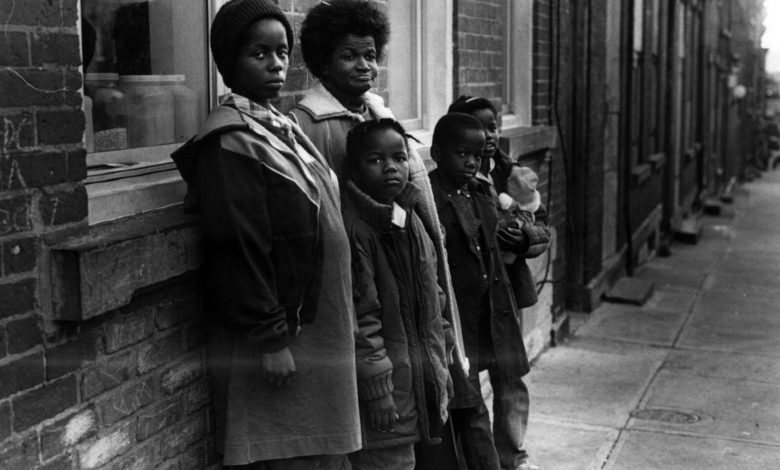

Provided
The history of segregated neighborhoods in Cincinnati is long and complicated.
Today, Cincinnati is a minority-majority city but many of the neighborhoods don’t reflect that. An Enquirer analysis of 2020 U.S. Census data found that while minority populations are on the rise on the West Side, nine of Cincinnati’s 10 most segregated white neighborhoods are now clustered on the East Side.
Census 2020: Cincinnati officially ends 70 years of population loss in new count
Watch: Cincinnati's most segregated neighborhoods
Segregated Cincinnati: Why 1 in 3 people live in predominantly Black or white neighborhoods
Segregated Cincinnati: Why is Cincinnati's East Side more segregated than its West Side?
But segregation is nothing new to the city. It has existed since the 1800s and has been shaped by politics, development and the economic changes brought by both.
Here are some of the events that explain how it happened and why it persists.

File
Ohio’s “Black Laws” discourage Black people from settling in the new state by limiting their freedoms. Black settlers are required to find two people willing to post a $500 surety guaranteeing their good behavior. They also cannot own guns or marry whites and must prove to local authorities they are not slaves before receiving a certificate that allows them to legally work in the state.
A series of race riots occurred in Cincinnati as white residents pushed back against the small but growing Black population. In 1829, a white mob attacked Black neighborhoods for weeks, trying to get them to move. In 1841, a white mob busted up a riverfront neighborhood known as Bucktown, where many Black residents lived.
Most Cincinnatians live in a six-square-mile area, making it one of the nation’s most densely populated cities. The poorest, including most of the city’s Black population, live on the city’s polluted and crowded riverfront. Black people live alongside whites, but they cluster mainly in Bucktown and Little Africa, two predominantly white neighborhoods that likely got their names because they were home to Black churches, schools and other institutions.
Cincinnati’s streetcars and inclines expand the city’s living space, making it possible for people to live farther from their workplaces. Those with the financial means to move from the crowded riverfront begin to do so. Poor whites and most of the city’s Black population are left behind.

Thanks to the Van Benschoten family

The Detroit Publishing Company/Library of Congress
Detroit Publishing Co./Library of Congress
Cincinnati’s Black population begins to grow rapidly, more than doubling to almost 50,000 between 1910 and 1930 as many migrate north in pursuit of jobs. Most of the newcomers are poor and settle in the West End, close to their factory and warehouse jobs, while whites who can afford to leave continue their exodus to places such as Clifton Heights, Mount Auburn and Avondale.
The Cincinnati Real Estate Board issues a mandate to real estate agents: “No agent shall rent or sell property to colored people in an established white section or neighborhood and this inhibition shall be particularly applicable to the hilltops and suburban community.” The goal is to prevent Black residents in the city’s urban core from following whites to other neighborhoods.
Black mortality rates are double those of the city overall. Upon visiting Cincinnati’s West End, public health pioneer Dr. Haven Emerson declares, “You could not produce a prize hog to show at the fair under conditions that you allow Negroes to live in this city.”
The U.S. Supreme Court affirms the legality of zoning laws in the landmark case Euclid v. Ambler Realty. Though the dispute is over the separation of industrial and residential areas, the court’s ruling also allows zoning that separates different types of residential homes and apartments, essentially limiting access to some neighborhoods based on income. Alfred Bettman, a Cincinnati city planner, argues in favor of this expansive view of zoning.

AP
The new Federal Housing Administration provides federally backed loans to home buyers in Cincinnati and other cities. The program reinforces housing segregation by drawing lines around neighborhoods on maps, ranking them from lowest to highest lending risk. The practice, known as “redlining,” singles out predominantly Black neighborhoods as high risk, limiting homeownership opportunities.
Growing demand for low-income housing leads city officials to begin using federal aid to build large-scale housing projects. Almost all of these are racially segregated. In the West End, Lincoln Court is exclusively for Black residents while Laurel Homes has separate Black and white sections.

The Enquirer/Glenn Hartong
Crowding worsens in Black neighborhoods because so little housing is available to Black residents. Housing vacancies in Black areas of the city fall to 0.3%, compared to 2% to 3% in white areas.
A mob of more than 50 white men and boys surround a Mount Adams home soon after a Black woman and her children move into a downstairs apartment. The mob hurls stones at the home, breaking every window and forcing the occupants to flee. No arrests are made.

Provided/Dave Gilb
The Evanston Home Owners Association devises a plan to prevent Black people from moving in: If a Black person made an offer on a home, the association would swoop in, buy it and resell the property to a “desirable” buyer. Such racially restrictive rules and covenants are legal until the U.S. Supreme Court declares them unconstitutional in 1948.
Cincinnati undertakes a massive redevelopment of the lower West End to make way for Interstate 75 and a new industrial and business district, now known as Queensgate. Tenements and shops in an area known as Kenyon-Barr, almost entirely populated by Black families, are torn down. Most of the displaced families move to Over-the-Rhine, Avondale and Walnut Hills, just as white families leave in greater numbers for the suburbs.
The Fair Housing Act prohibits discrimination in the sale, renting or financing of housing on the basis of race, religion, national origin or sex.

AP
Though banned by the Fair Housing Act, discriminatory practices continue. Some real estate agents “steer” whites to predominantly white neighborhoods and Black people to Black neighborhoods. In Cincinnati, Housing Opportunities Made Equal files multiple lawsuits against insurance companies and real estate firms to expose and end such practices.

Meg Vogel/ The Enquirer
White Cincinnatians begin to move back into some urban core neighborhoods, such as Over-the-Rhine and the West End, as the city partners with developers to build new bars, restaurants and market-rate housing. This leads to more integrated neighborhoods, but also to gentrification that displaces some poorer Black residents.
While the city overall and many of its neighborhoods have become more integrated, segregation persists. Roughly 1 in 3 Cincinnati residents live in neighborhoods where the population is at least 75% Black or white.

The Enquirer/Mark Wert and Michael Nyerges
Sources: Ohio History Central, Justia U.S. Supreme Court Center, BlackPast, "Cincinnati Blacks and the Irony of Low-Income Housing Reform, 1900-1950" (Robert B. Fairbanks), "The Black Residential Experience and Community Formation in Antebellum Cincinnati" (Henry Louis Taylor, Jr.), 'Going Home: The Struggle for Fair Housing in Cincinnati 1900 to 2007' (Charles F. Casey-Leininger), National Community Reinvestment Coalition, 'Euclid’s Historical Imagery' (Richard H. Chused) and "Lost Cincinnati" (Jeff Suess).
Published
Updated
Source link







